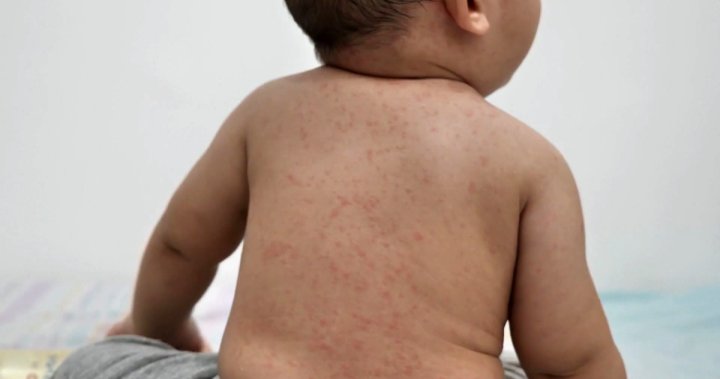The number of confirmed measles cases in Alberta is only a week, starting with 193 confirmed cases on May 1, 313 cases on May 8.
Almost two-thirds of cases are located in the southern part of the state, including Lethbridge, Tucker and Medicine Hat.
The actual cases of cases hosted by the Alberta Medical Association are probably much higher at a press conference in Alberta, former chief medical health officer in Alberta. According to Dr. James Talbott, former Alberta medical health officer.
“The numbers reported in Alberta are actually lagging behind the number of infections because measles infect someone, causing symptoms, developing a rash and it takes time for them to be reported after lab tests are confirmed,” Talbot added.
The disease once considered eradicated in Canada now shows signs of exponential growth. Alberta is quickly approaching Ontario's spread rate, bringing another 197 confirmed cases last week to 1,440.
101 Ontario patients are hospitalized, including 75 children, of which eight are in intensive care.

“In the last three weeks in Alberta, what we've seen at least twice as many new cases each week. So we're still in the expansion phase and there's no sign of slowing down at least for the coming weeks.”
The number of measles cases in Saskatchewan also shows signs of explosive growth with the state's chief medical health officer, Dr. Saqib Shahab, confirmed a total of 27 confirmed infections as of Thursday.

Get weekly health news
Receive the latest medical news and health information provided every Sunday.
“The age range is five months. Almost all but one case has not been vaccinated. It is at high risk, surrounding families and communities have not been vaccinated, and the majority of cases are children and school-age adolescents, so they are not vaccinated.
“Two hospitalizations have been reported. So one in 20 people get hospitalized and one in five get other complications that require medical care. So we're already beginning to see that,” Shahab added.
Talbot said the proportion of children in Alberta who have not been vaccinated or partially unimmunized is also very high.
“On average, the recommended percentage of children under two vaccines in Alberta is 68%,” Talbot said.
“These are government's own numbers, which are well below the 95% target. In the north, south and central, coverage rates below 50% have deteriorated.”

Faced with fierce criticism for not doing enough to encourage Albertans to vaccinate themselves and their children against measles, the state health minister announced Monday an expansion of vaccination efforts with extensions and walk-in availability at some of the state's most intensely hit portions.
The state also introduced new early doses of the measles vaccine for infants between six and 11 months. This is two vaccines ranging from 12 to 18 months in addition to the regular vaccination schedule.
They also launched a new advertising campaign in 14 languages to promote vaccination.
“We've often been relegated to the childhood infectious disease you deal with this disease in our culture (but) in reality, we know that about one of the 10 cases requires some form of hospitalization.
“About 1,000 people, or maybe more, will require intensive care unit hospitalization and intubation.
“Every 1,000 people, between one to three children will be lost to this virus.”
Measles is often considered a childhood illness, but infectious disease expert Dr. Linola Saxinger said that adults should also be sure they need to be vaccinated.
“So young people under 55 grew up in a world where measles was decreasing very quickly. Many of them were taking one dose of vaccine because it was recommended at the time. “This can be a fatal complication.”
“It can get very severe illness. It's not just a rash, it's a whole body disease, and people can get severe lung disease. Hepatitis, encephalitis, another big feature is that it's postmares, people can have periods of relative immunity deficiency,” added Saxinger.
“The last thing we don't know if we mentioned it is that there is a late complication of measles called subacute sclerotic encephalitis (fatal brain damage), which actually occurs seven to 10 years after ingesting measles, especially if measles is acquired by young children.”
“If you die from one to three in 1,000 people, every 1,000 people die, you keep paying the price,” Talbot said. “But it doesn't end in the first 1000. That's the bill you pay for every thousand. And that's what prevention is so important.”
More details on measles, including symptoms, vaccinations and daily updates of confirmed cases can be found online at Alberta Health at Alberta.ca/measles.
Information on measles in Saskatchewan can be found online by clicking here.

&Copy 2025 Global News, a division of Corus Entertainment Inc.

